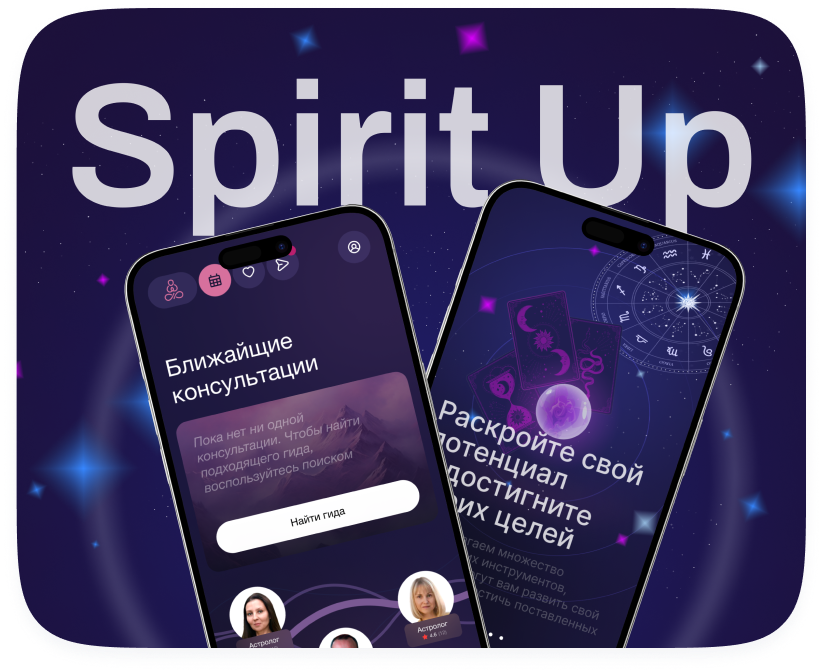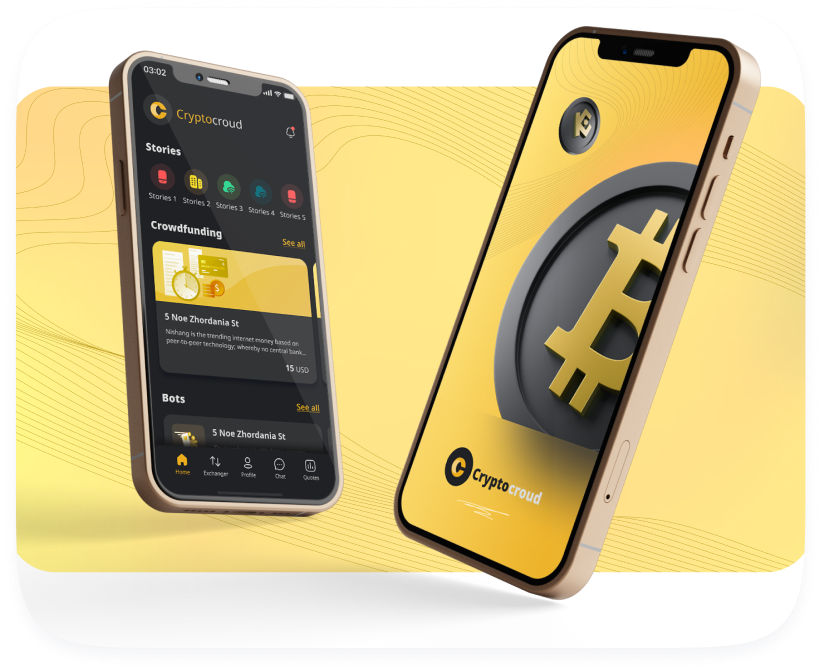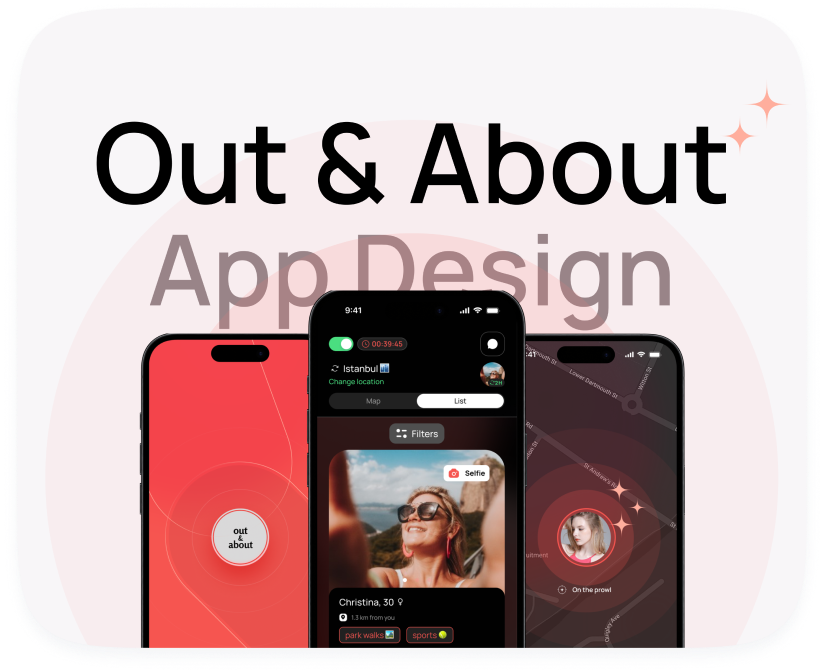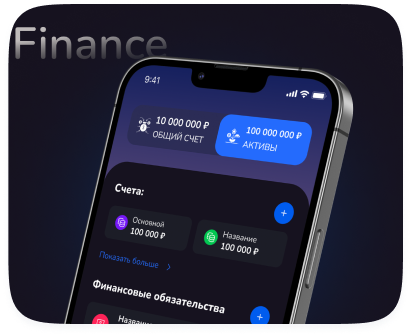
We build mobile apps
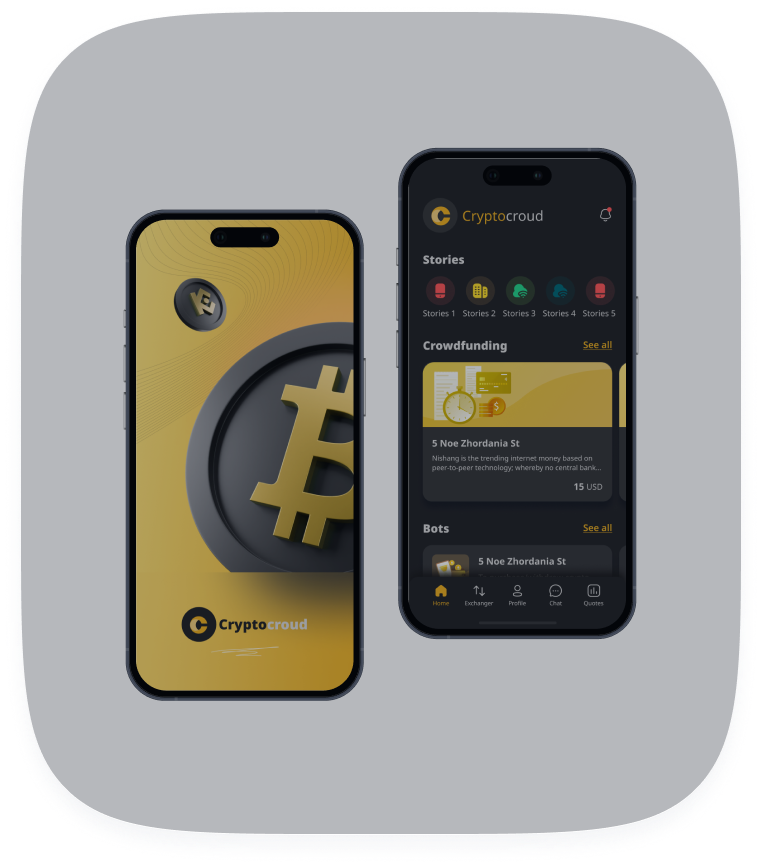




We work directly with every client
We deliver solutions with guaranteed results.

We build mobile apps






















It’s similar to buying a car at a dealership: you can go with the basic model, or choose a fully loaded version — it all depends on your needs and goals.

How to create YOUR OWN ChatGPT?

How to PROPERLY create a mobile app in 2024 | Step by step

You pay > We work > You receive the results. If you’re satisfied, you pay the next installment.
We need to have a call and discuss your specific requirements.
One thing we can say for sure: projects under 500,000 rubles are not feasible — we can’t deliver the required quality for less.
We launch, gather user feedback, and add new features that help you earn more from the app.
During development, I always design the architecture to make future updates and improvements easy and convenient.
Some apps perform better with influencer marketing, others through ad networks, and sometimes it’s even effective to buy a contact list and set up retargeting 😊
It all depends on your project’s specifics and is discussed personally.
How we can help:
- Set up ASO (App Store Optimization) and create an attractive app store page to drive free, organic installs.
- Help you develop the right promotion strategy tailored to your app.
- Share contacts of advertising experts I personally work with.
Спросить ChatGPT
The only ongoing cost is paying for the server (hosting).
You pay a subscription fee for the server. The more users your app has, the more server resources it consumes, and the higher the hosting costs.
At the early stages, when you have few users, the server will be FREE.
After that, the cost will gradually increase, but it remains affordable.
For example, an app with 100,000 users spent about $150 per month on hosting.
Wearable App Development Services: Apple Watch & Android Wear
Description: Expert wearable app development services for Apple Watch and Android Wear. Create innovative and engaging applications for the next generation of wearable devices.
Introduction to Wearable App Development
The realm of wearable technology has witnessed exponential growth in recent years, with smartwatches and other wearable devices becoming increasingly integral to our daily lives. This surge in popularity has fueled a corresponding demand for sophisticated and user-friendly wearable applications. Wearable app development focuses on creating software that runs seamlessly on these devices, providing users with convenient access to information, features, and services directly from their wrists or other wearable platforms. This article delves into the intricacies of wearable app development services, specifically focusing on Apple Watch and Android Wear platforms, highlighting the key considerations, challenges, and opportunities in this exciting field.
The shift towards wearable technology signifies a paradigm shift in how we interact with technology. No longer are we tethered to our smartphones or computers for every task. Wearables offer a more immediate, hands-free, and context-aware experience. This accessibility presents a unique opportunity for businesses and developers to reach users in new and innovative ways. From health and fitness tracking to mobile payments and smart home control, the possibilities for wearable applications are vast and continuously evolving. Understanding the nuances of developing for these platforms is crucial for success in this burgeoning market.
Understanding Wearable Platforms: Apple Watch and Android Wear
Apple Watch Development
The Apple Watch, powered by watchOS, is a leader in the smartwatch market. Developing for Apple Watch requires a deep understanding of the watchOS SDK, which is built upon the core principles of iOS development but adapted for the smaller screen and unique user interactions of a smartwatch. Key features and considerations for Apple Watch app development include:
- SwiftUI and WatchKit: Apple's primary frameworks for building Apple Watch apps. SwiftUI allows for declarative UI development, while WatchKit manages the communication between the Watch and the paired iPhone.
- Complications: Small, glanceable pieces of information that users can display directly on their watch face. Effective complications are crucial for providing quick and relevant information.
- Glances: Simple, single-screen interfaces that provide a brief overview of an app's key data. Glances are designed for quick access and minimal interaction.
- Notifications: Delivering timely and relevant notifications to the user's wrist, avoiding overwhelming them with unnecessary alerts.
- Apple Pay Integration: Enabling secure and convenient mobile payments directly from the Apple Watch.
- HealthKit Integration: Leveraging the Apple Watch's built-in sensors to track health and fitness data, integrating with the HealthKit framework for a comprehensive user experience.
- Performance Optimization: Ensuring apps are lightweight and performant, as the Apple Watch has limited processing power and battery life compared to iPhones.
Android Wear (Wear OS) Development
Android Wear, now known as Wear OS by Google, is Google's operating system for smartwatches and other wearables. Wear OS is designed to be platform-agnostic, working with both Android and iOS devices. Key aspects of Android Wear app development include:
- Android SDK for Wearables: Google's development toolkit for building Wear OS apps, based on the Android SDK but with specific APIs and libraries for wearables.
- Wearable UI Library: Providing UI components and layouts optimized for the round and square screens of Wear OS devices.
- Notifications: Mirroring notifications from the user's phone and allowing for interactive responses directly from the watch.
- Voice Actions: Leveraging Google Assistant integration to enable voice-controlled actions and interactions.
- Google Fit Integration: Tracking fitness data and integrating with the Google Fit platform.
- Standalone Apps: Developing apps that can run independently on the Wear OS device, without requiring a paired phone.
- Battery Optimization: Designing apps that conserve battery life, a critical consideration for wearable devices.
Choosing between Apple Watch and Android Wear depends on the target audience and the specific functionality required. Apple Watch development caters to users within the Apple ecosystem, while Android Wear offers broader compatibility across different devices and operating systems.
Key Considerations for Wearable App Development
User Experience (UX) Design
UX design is paramount in wearable app development. The small screen size and unique interaction methods require a different approach than traditional mobile app design. Key considerations include:
- Glanceability: Designing interfaces that provide information quickly and easily with minimal interaction.
- Simplified Navigation: Implementing intuitive and efficient navigation systems, often relying on gestures and voice commands.
- Context-Awareness: Leveraging the wearable's sensors and location data to provide contextually relevant information and actions.
- Accessibility: Ensuring the app is accessible to users with disabilities, considering factors like font size, color contrast, and voice control options.
- Minimizing Interactions: Reducing the number of taps and swipes required to complete a task.
Performance Optimization
Wearable devices have limited processing power and battery life, making performance optimization crucial. Strategies for optimizing wearable apps include:
- Lightweight Code: Writing efficient code and avoiding unnecessary libraries or dependencies.
- Background Processing: Minimizing background activity to conserve battery life.
- Data Synchronization: Optimizing data synchronization between the wearable and the paired phone or cloud server.
- Image Optimization: Using optimized images and graphics to reduce memory usage and improve loading times.
Security
Wearable devices often handle sensitive data, such as health information and payment details, making security a top priority. Security measures should include:
- Data Encryption: Encrypting data both in transit and at rest.
- Secure Authentication: Implementing secure authentication mechanisms, such as biometric authentication or two-factor authentication.
- Data Privacy: Adhering to data privacy regulations, such as GDPR and CCPA, and obtaining user consent for data collection and usage.
- Regular Security Audits: Conducting regular security audits to identify and address vulnerabilities.
Platform-Specific Guidelines
Adhering to the specific design guidelines and development best practices of each platform (Apple Watch and Android Wear) is essential for ensuring a consistent and high-quality user experience. These guidelines cover aspects such as UI elements, interaction patterns, and API usage.
The Wearable App Development Process
The wearable app development process typically involves the following stages:
- Ideation and Planning: Defining the app's purpose, target audience, and key features.
- UX/UI Design: Creating wireframes, mockups, and prototypes to visualize the user interface and user experience.
- Development: Writing the code for the app, using the appropriate SDK and programming languages.
- Testing: Thoroughly testing the app on different wearable devices and under various conditions.
- Deployment: Publishing the app to the Apple App Store or Google Play Store.
- Maintenance and Updates: Providing ongoing maintenance and updates to address bugs, improve performance, and add new features.
A skilled wearable app development team will possess expertise in the following areas:
- Mobile App Development: A strong foundation in mobile app development principles and practices.
- Wearable SDKs: In-depth knowledge of the Apple Watch SDK (SwiftUI, WatchKit) and the Android SDK for Wearables.
- UX/UI Design: Expertise in designing user interfaces and user experiences specifically for wearable devices.
- Backend Development: Experience in developing backend systems to support the app's functionality, such as data storage and synchronization.
- Quality Assurance: Rigorous testing and quality assurance processes to ensure the app is stable, reliable, and performs optimally.
Monetization Strategies for Wearable Apps
Several monetization strategies can be employed for wearable apps, including:
- Paid Apps: Charging a one-time fee for users to download and use the app.
- In-App Purchases: Offering additional features, content, or subscriptions within the app.
- Freemium Model: Providing a basic version of the app for free and charging for premium features or content.
- Advertising: Displaying advertisements within the app. However, this approach should be used cautiously on wearables due to the limited screen size.
- Data Monetization: Anonymizing and selling user data (with user consent) to third parties.
- Subscription Model: Charging a recurring fee for access to the app's features and services. This is common for fitness tracking and health-related apps.
The choice of monetization strategy will depend on the app's functionality, target audience, and competitive landscape.
The Future of Wearable App Development
The future of wearable app development is bright, with continued innovation and growth expected in the coming years. Key trends and opportunities include:
- Increased Integration with AI and Machine Learning: Leveraging AI and machine learning to provide more personalized and intelligent experiences.
- Enhanced Health and Fitness Tracking: Developing more sophisticated health and fitness tracking features, leveraging advanced sensors and algorithms.
- Augmented Reality (AR) and Virtual Reality (VR) Integration: Integrating wearable apps with AR and VR technologies to create immersive and interactive experiences.
- Expanded Use Cases in Enterprise: Exploring new use cases for wearable apps in enterprise settings, such as logistics, manufacturing, and healthcare.
- Improved Battery Life: Ongoing improvements in battery technology will allow for more complex and feature-rich wearable applications.
- More Standalone Functionality: Wearables will become increasingly independent from smartphones, allowing for more robust standalone app experiences.
As wearable technology continues to evolve, wearable app development will play an increasingly important role in shaping the way we interact with the world around us.
Benefits of Using Wearable App Development Services
Partnering with a specialized wearable app development service provides several key benefits:
- Expertise and Experience: Access to a team with deep knowledge of wearable platforms and development best practices.
- Faster Time to Market: Streamlined development processes and efficient project management.
- Cost-Effectiveness: Reduced development costs through optimized workflows and resource allocation.
- High-Quality Apps: Ensuring the development of robust, scalable, and user-friendly wearable applications.
- Ongoing Support and Maintenance: Continuous support and maintenance to keep your app up-to-date and performing optimally.
By leveraging the expertise of a wearable app development service, businesses can effectively capitalize on the growing market for wearable technology and deliver innovative solutions to their users.
Wearable App Development Cost Factors
The cost of wearable app development can vary significantly based on a number of factors:
- App Complexity: More complex features and functionality will require more development effort and thus increase costs.
- Platform Choice (Apple Watch or Android Wear): Developing for multiple platforms will naturally increase the overall budget.
- Design Complexity: Custom UI designs and animations will require more design resources and time.
- Backend Infrastructure: The complexity and scalability requirements of the backend infrastructure can significantly impact costs.
- Development Team Location: Development costs can vary based on the location of the development team (e.g., onshore vs. offshore).
- Integration with Third-Party Services: Integrating with external APIs or services will require additional development effort.
- Testing and Quality Assurance: Thorough testing is essential to ensure app quality, and this can contribute to the overall cost.
It's important to carefully consider these factors when planning your wearable app development project and to obtain a detailed cost estimate from a reputable development service.
Table: Comparison of Apple Watch and Android Wear
| Feature | Apple Watch (watchOS) | Android Wear (Wear OS) |
|---|---|---|
| Operating System | watchOS | Wear OS by Google |
| Programming Languages | Swift, Objective-C | Kotlin, Java |
| App Development Frameworks | SwiftUI, WatchKit | Android SDK for Wearables |
| Ecosystem | Apple ecosystem (iPhone required for initial setup) | More platform-agnostic (works with both Android and iOS) |
| Voice Assistant | Siri | Google Assistant |
| Health and Fitness | HealthKit | Google Fit |
| Payment System | Apple Pay | Google Pay |
| Hardware Variety | Limited to Apple Watch models | Variety of manufacturers and designs |
Conclusion
Wearable app development presents exciting opportunities for businesses to engage with users in new and innovative ways. By understanding the nuances of Apple Watch and Android Wear platforms, focusing on user experience, optimizing performance, and prioritizing security, developers can create successful and engaging wearable applications. As the wearable market continues to grow and evolve, wearable app development services will play an increasingly critical role in shaping the future of wearable technology.


